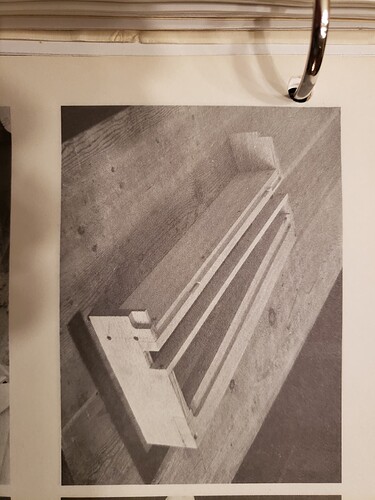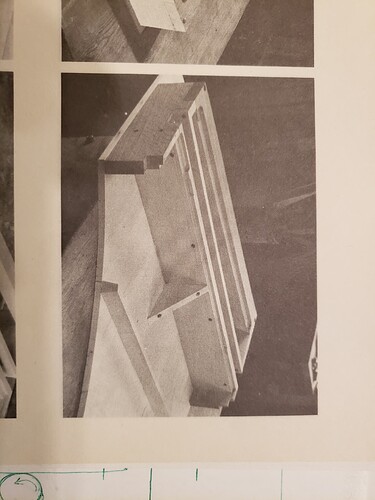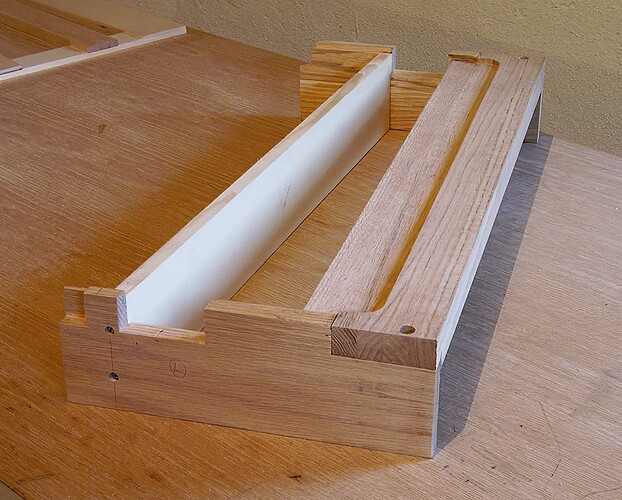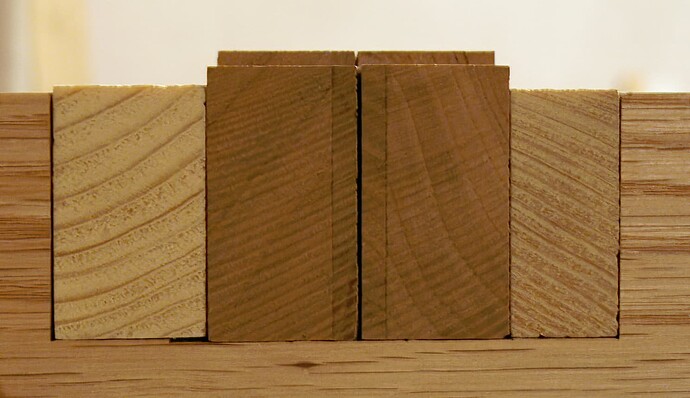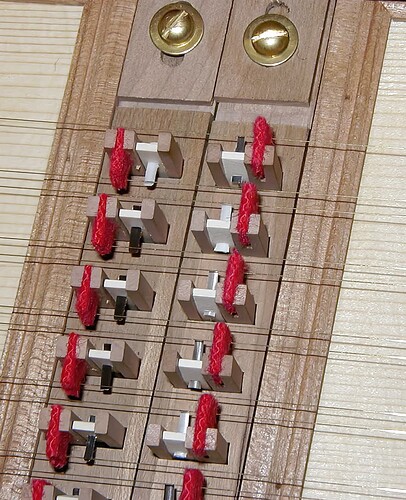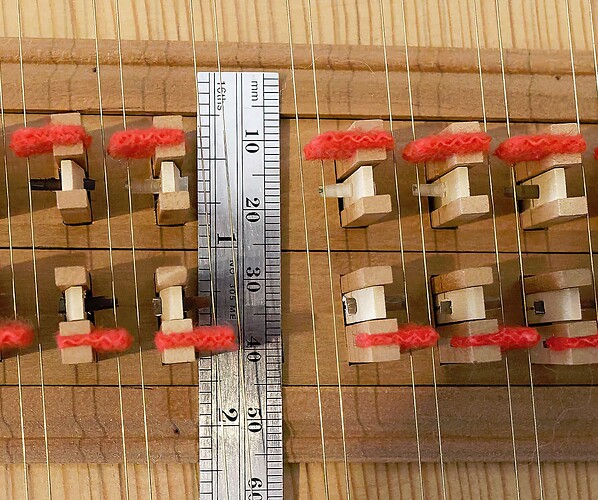Having to unjam frozen registers in a self-made Zuckermann Italian III for 2nd time in about 17 years. I can’t recall when I did my first unjamming, that was several (7-10) years ago. The case is not otherwise moving and the instrument holds tuning just fine. The difference in gap width between the middle and the register ends measured with a feeler gauge is less than 1mm (I assume the register gap sides were plane and parallel at the time of the build but I can’t say I checked). Question to the group - will future movement slow down over time, assuming case is sound or will it accelerate? It is not obvious with this design how to strut against future distortion.
I’ve had the same issue. I fixed by removing the box guides and thinning them with a plane as much as I could without wrecking them. And adding “staples” that acted as gap spacers made of brass rod, bent and driven into the wrestplank and belly rail over the box guides.
This will mean removing all strings and restringing. But it seems to be working.
Dongsok
Thank you Dongsok. I can see how the “staples” idea would work, but that is more invasive than I need at this time. There is plenty of meat on my registers to plane down for the foreseeable future.
I recently had the same problem with my Zuckermann 1974 Flemish 2 x 8’. The registers were seperated by a pin as a guide and here was where it was sticking.
I removed the jacks and gently pried the register loose in order to get it out. I then slightly sanded the spots where it was rubbing. The register was now free to move but now there was not enough resistance to fight the return movement from the dampers. I ended up putting a .05mm shim between register and pin (aluminum from a tea light candle) Planing it could be too much so be careful.
Andrew
-----Original-Nachricht-----
Zuckermann Italian III is a good-sounding harpsichord but it has a well-known flaw in its “live” wrestplank. The wrestplank is indeed made in two pieces going from left to right with a gap in between. A piece of soundboard is then glued on, covering the two-pieces wrestplank. Thus the nut is glued on a portion of soundboard wood having nothing under it. So the bridge transmits its vobrations to the main soundboard and the nut transmits its vibrations to this small piece of soundboard wood having no wrestplank wood under it. This is aimed to “reinforce the fundamental”. Don’t know if that actually happens.
Fact is, the wrestplank is too weak, it bends and freezes the registers.
There is a very small number of historical italian harpsichord made this way.
I fixed - somewhat - by planing the registers sides and tossing a lot of strings (and saying a lot of words I will not repeat here).
A better solution is a lighter stringing and maybe lowering the diapason. This (lighter stringing I did at last, and everything is ok now.
Or, if you can afford that, leave evrything else as is and just put away all the strings of the second register. I love single-strung harpsichords and the Z Italian III is in my opinion a good candidate for that. The sound is freer and clearer, you can afford heavier stringing and heavier voicing to bring up all the volume the instrument is capable of. Just my taste, of course.
Dom.
Ps Don’t get me wrong: I enjoyed making that kit from the first to the last day. Except when my registers froze twice and I had to invent something to take out the registers without losing the strings, twice. I didn’t succeed entirely and I lose half the strings the first time and one-third strings the second time. Once fixed, I enjoyed making the kit again.
I would beg to differ in the analysis of the gap closing being due to the “2 part wrest-plank” being weak. I add some pictures from the manual of the interesting arrangement, for the curious.
There is really a pretty solid wrestplank and what the manual terms a “nut bridge rail” up against the gap to enclose the unsupported area of the mini-soundboard. The wrestplank has not moved, distorted or rotated in my case - that is easy to inspect, as the nameboard is removable. There is no real string tension force transmitted to the nut-bridge rail. It is interesting the observation that the extra little bit of sound board reinforces the fundamental, as just based on its size you would imagine that favors high frequencies & overtones. I am left with no good feel for the movement closing my gap, but I fixed it again with some small work with a carpenters scraper. (Planing would be overkill). As I hinted before the closure movement was less than 1mm. Next time this happens if it does (wait 5 or 7 years lets hope) I will put a straight-edge against the gap edges and report to the group what I am seeing. (I added a little door on the spine side for register removal the first time the closing happened, so no disruption of the strings is needed. And no-one sees the spine side). In a world of infinite resource I would like to try the conversion to single strung or to hear such an instrument single strung by comparison (I think Z’s offered it at one time single strung as an option). Against that I do like the chorus effect of 2x8 which I leave on the whole time anyway. Taking the 2nd set of strings off to relieve tension would leave the instrument looking like a handsome person with missing teeth, so I am not going to embark on that. Right now I am unfrozen, and the instrument is working fine, again. PS Hope my pictures load, have not tried that before.
That’s interesting, as my feeling is exactly the same, i.e. if anything, I find high frequencies a little reinforced. But this could also be an effect of the Sitka spruce soundboard which I’ve read somewhere does enhance high frequencies (can anybody confirm?). Or I easily could be wrong.
As for the structural part of the issue, I think it’s an issue fairly well assessed. You can find discussions on the same subject in the now-defunct hpschd-l mail list (archives still readable and searchable). Some users reported using a lighter stringing list (me also). And, it’s the only Zuckermann kit consistently showing this issue.
Some prominent makers agreed it is a problem arising from the “live wrestplank” construction. During the history of the development there was an epoch when DJ Way added a “wrestplank stiffener”, in the form of gap spacers between the two parts of the wrestplank. I don’t know rhis first-hand, though, just what I understand from reading.
The good news is once it has been addressed, it doesn’t show again, or only after many years. David Pickett wrote a post then stating his Z italian didn’t move after that, and this has been my experience as well, though we both use a lighter stringing.
I like that harpsichord. If I had to make one again I’d only use fir or european spruce for soundboard.
I made an error when making. I used the Franklin “hide glue” to glue the bridge. It seems a bit “rubbery” to me, never properly hardening. I’d use real hide glue today (which I love using), or the suggested Titebond. After 14 years it’s still there, however, so it shouldn’t be a problem and maybe it’s only a wrong impression.
Dom.
[quote=“WPADAMS1, post:6, topic:1317, full:true”]Taking the 2nd set of strings off to relieve tension would leave the instrument looking like a handsome person with missing teeth, so I am not going to embark on that.
[/quote]
It’s a pretty simple and unobtrusive fix: take out the second choir of strings; take away all the bridge- and nut- and hitchpins of the second choir of strings; fill the holes with small round toothpicks; pare with a chisel; put a drop of finish on them (whatever you used in the first place: oil, shellack, hide glue-sizing…).
The now-unused second register could be left there as it isn’t see-able, or it could be substituted by a wooden bar, obviously without the jack mortices.
As I said, I love single-strung harpsichords.
Or flip the jacks to give choices of voicings on the single strings…?
You might consider using a Wixey gauge (digital level) to take measurements of the various surfaces of the front structure. Record them for comparison in the future. I have no experience of this remarkable design, but I replaced the wrest plank of a Zuckermann fortepiano which had sagged and twisted under string tension. The sag downward toward the distal edge of the plank was considerable, and it did not recover when the strings were removed.
The scale tension on the instrument had been increased by D. J. Way to “make the instrument more suitable for Beethoven.”
I built my ZHI Italian III in Michigan between April 2002 and August 2003. The Swiss pine soundboard was put in February 2003 at 30% RH. This is a photo of the assembled wrest plank (horse):
The red oak westplank is screwed and glued in two oak side pieces. The lower belly rail that can also be seen is spruce.
This is a photo before assembly, of the ends of the registers, flanked by the upper belly rail (spruce) and nut board rail (also spruce), showing the spacing between them:
A photo after stringing of the treble end, showing the gap after stringing:
A photo taken today, 20 years after building, jacks removed at middle C:
The registers still slide easily without any binding. The original pitch, with ZHI brass, was 444 Hz. I reduced this to 420 Hz when I restrung with Birkett brass in July 2019.
The closure is obviously worse in the centre of the compass. If in the future I need to make more space, I might consider taking some wood from the nut board rail
David
